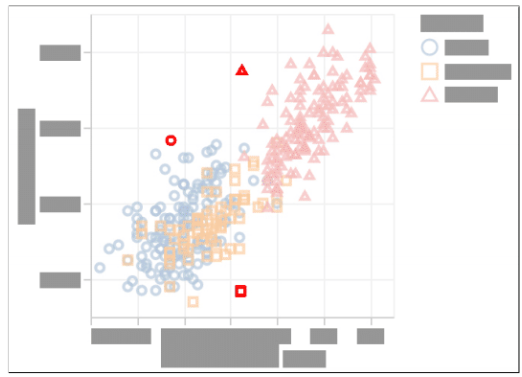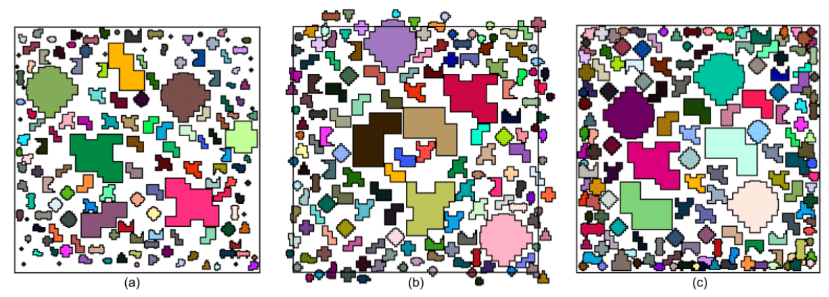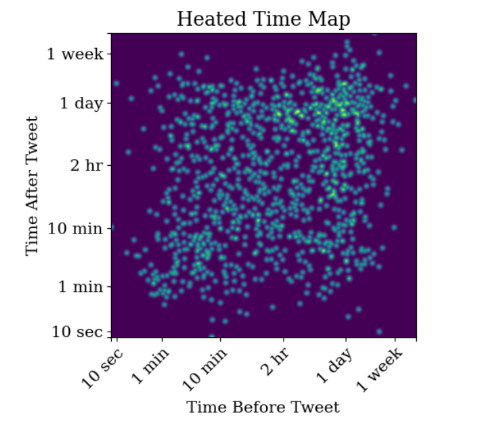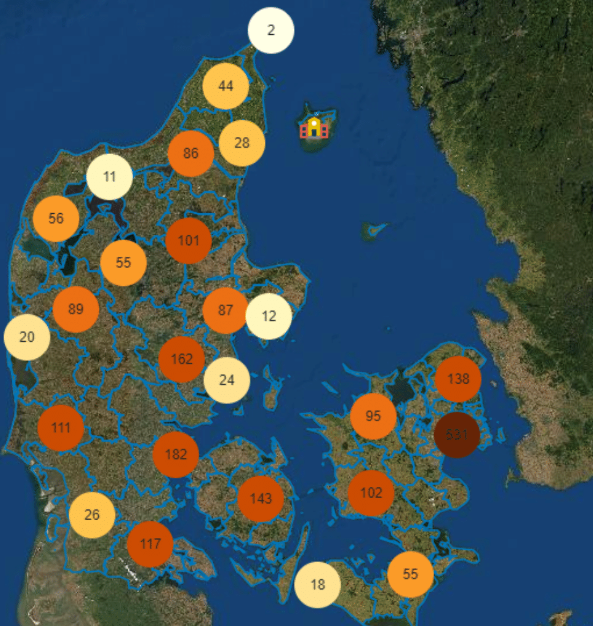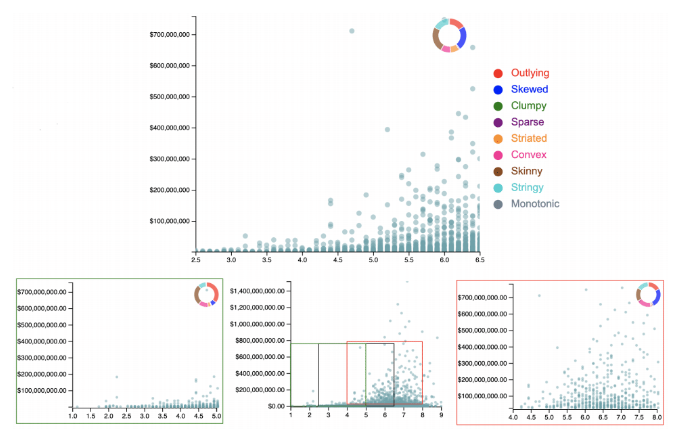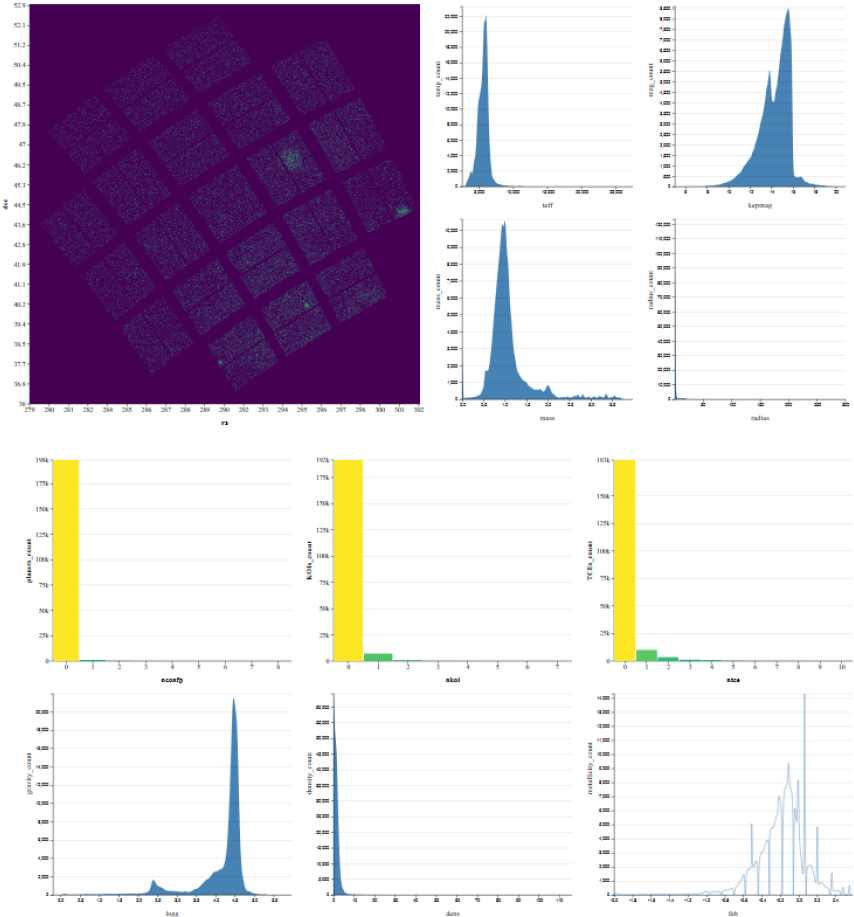Selected Student Projects
Here, you can find projects developed by students working with us, for example as part of a Bachelor and Master thesis or during a course work project.
Thesis Projects
Course Projects
2024
-
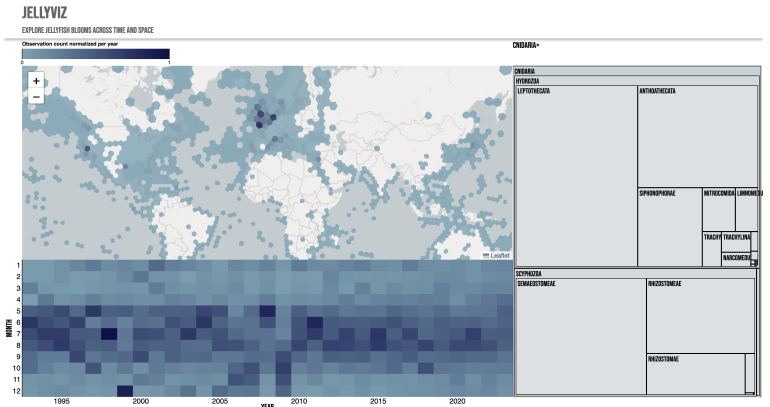 Visualizing Jellyfish
Visualizing JellyfishEcologists increasingly rely on citizen science species observations to compensate for the scarcity of ecological surveys. Visualizing the spatio-temporal distribution of such observations can reveal interesting patterns shifts over time and space, that can inspire future research questions. This is especially promising for jellyfish outbreaks – also known as blooms – as ecologists reported their increase in both frequency and magnitude, with respect to ocean global warming. We propose a visualization application designed toward ecologists, allowing them to explore spatio-temporal distribution patterns with extensive filtering options. And we demonstrate its usage on a dataset of jellyfish observations.
-
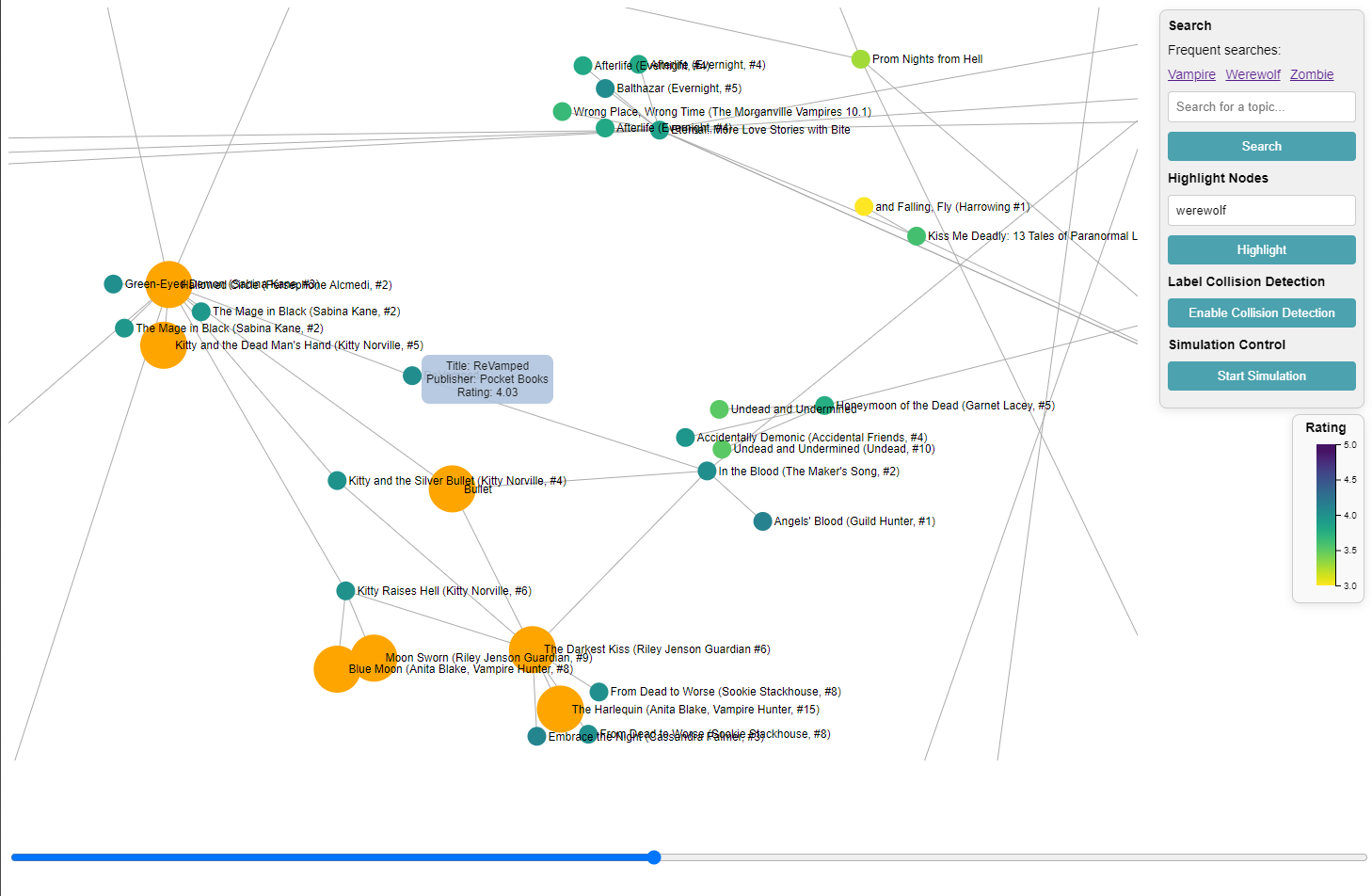 Steamy Vampires and a Dirty Dataset
Steamy Vampires and a Dirty DatasetAn interactive network graph of fantasy books from Goodreads that allows users to search for and highlight keywords, supporting two main tasks: exploring a huge dataset and identifying sub-genres by clusters in the graph.
2023
-
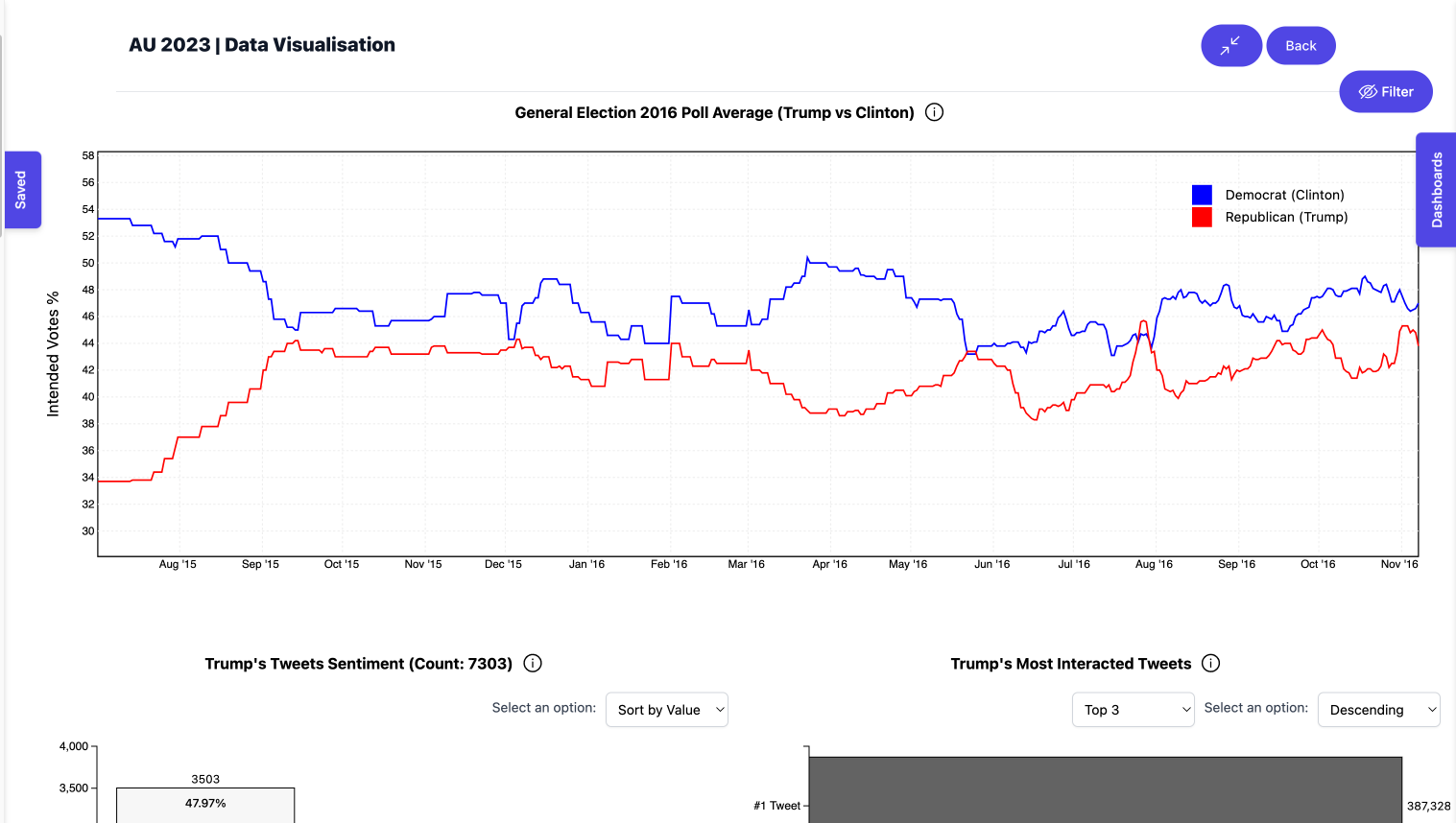 Trump's Tweets and the 2016 US Election
Trump's Tweets and the 2016 US ElectionOur interactive, multi-level data visualization project allows users to analyze Donald Trump’s tweets during the 2016 US elections and to understand their impact on the election outcomes. The dashboard provides a multi-coordinated view, allowing users to explore various aspects of the data simultaneously. It offers a drill-down capability for users to create smaller subsets of the dashboard with n-levels of depth for detailed analysis. The dashboard consists of interactive visualizations, such as word-cloud, time-maps and bar/column-charts which users can manipulate to conduct their analysis. The project analyzes the content, timing, and engagement of Trump’s tweets and correlates this data with election poll averages between Clinton and Trump via an interactable line chart that acts as a timeline scrubber.
-
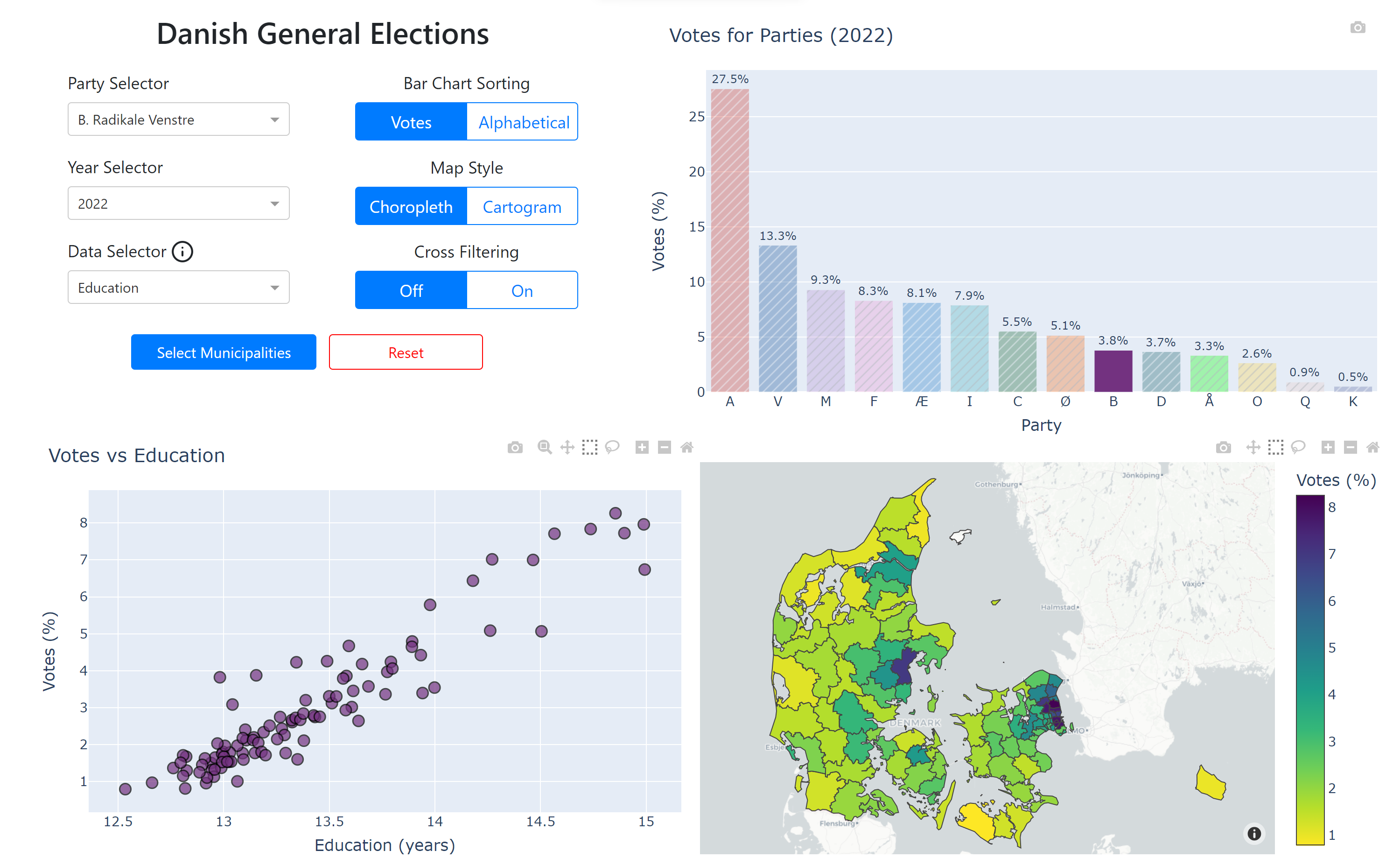 Visualizing Danish Election Data
Visualizing Danish Election DataUsing the data from past elections, the system consists of a choropleth map and a novel cartogram that shows the geospatial distribution of votes by party and municipality, a bar chart that shows the overall election results for the selected municipalities, and a scatter plot that shows the correlation between socioeconomic data and voting behavior. These three components make our multiple coordinated views, where when the user selects different parties, municipalities, and socioeconomic variables, it updates all views.
-
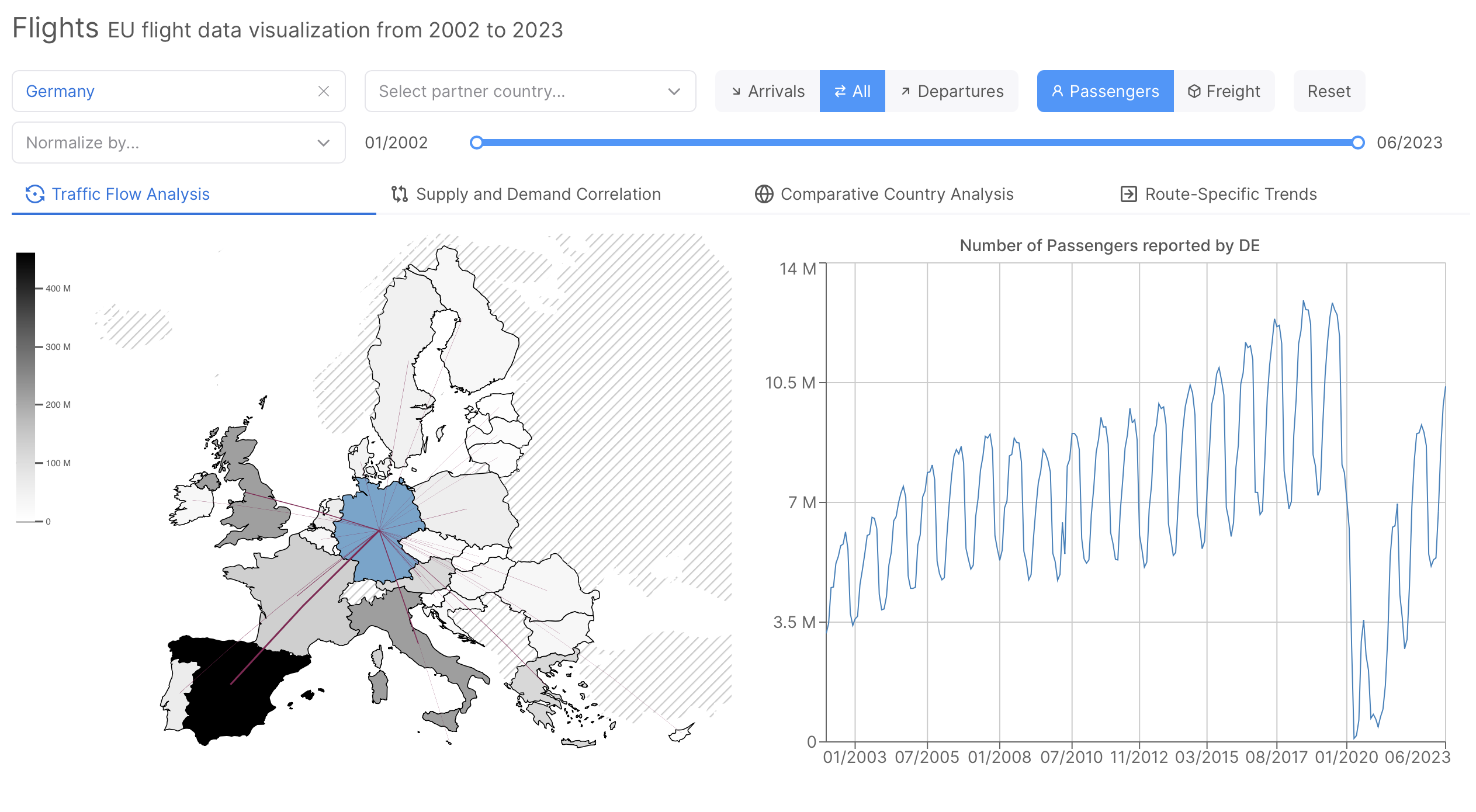 Passenger and Freight Air Transport in the EU
Passenger and Freight Air Transport in the EUWe visualize the temporal and spatial dimensions of passenger and air freight transport data across the EU. The visualization is based on datasets provided by Eurostat and the World Bank, spanning from 2002 until 2023. It supports four different analysis tasks with flow maps, line charts, column charts, scatter plots, and heatmaps to uncover patterns in various areas, such as the impacts of the COVID-19 pandemic on air passengers or the prevalence of the CargoLux cargo airline in Luxembourg. Each element of our visualization is interactive and supports cross-filtering. Users can normalize the data with population or GDP figures.
2022
-
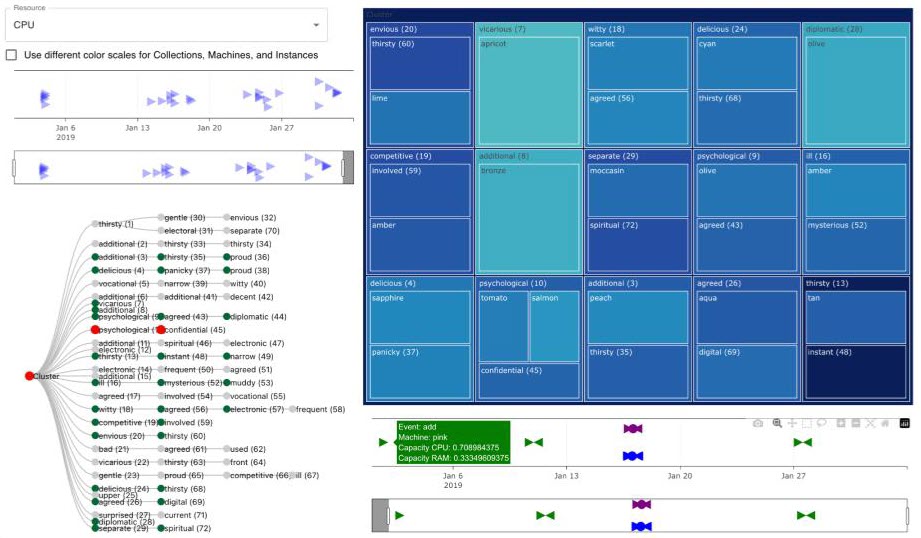 Explorable Cluster Workload Visualization
Explorable Cluster Workload VisualizationCompanies such as Google manage vast quantities of data over their various services. One such service is BORG, their computing cluster service. The dataset contains information about machines, deploys, and metrics, but it's so big that getting any useful information or even understanding what you're looking at is incredibly difficult and time-consuming. This visualization approaches the management and analysis of this data through data exploration. The final result is an interactive, expressive visualization that shows the user where the most CPU usage hours lie and allows the user to navigate to every corner of the data. On a larger scale, it allows the user to see relations in the data that would otherwise be obscured.
-
 Data Visualization for Exploring Spatial-Temporal Distributions of Bigfoot Sightings in the US
Data Visualization for Exploring Spatial-Temporal Distributions of Bigfoot Sightings in the USWe constructed a visualization of Bigfoot sightings in the US using data from the Bigfoot Field Research Organization. The visualization consists of 4 views including a choropleth map, two radial charts, and an area chart all views the distribution of reported Bigfoot behavior over space and time. The visualization's interactivity consists of cross-filtering between these views, allowing the user to explore the data and gain insights on sasquatches' behavioral patterns.
-
 Electricity Visualization for German Energy Data
Electricity Visualization for German Energy DataThe Electricity Visualization for Germany contains data on electricity generation, consumption, import/export and emissions per kilowatt hour for the German electricity sector from 2015 to 2022. The data is combined and graphically purified into a comprehensive visualization utilizing several charts. Spanning from time series and column charts over a heatmap to a fully self-composable scatterplot, we enable the user to explore the German electricity sector from various perspectives. With the visualization, the user is optimally equipped to discover patterns, observe outliers and to develop an in-depth insight into the German electricity sector.
-
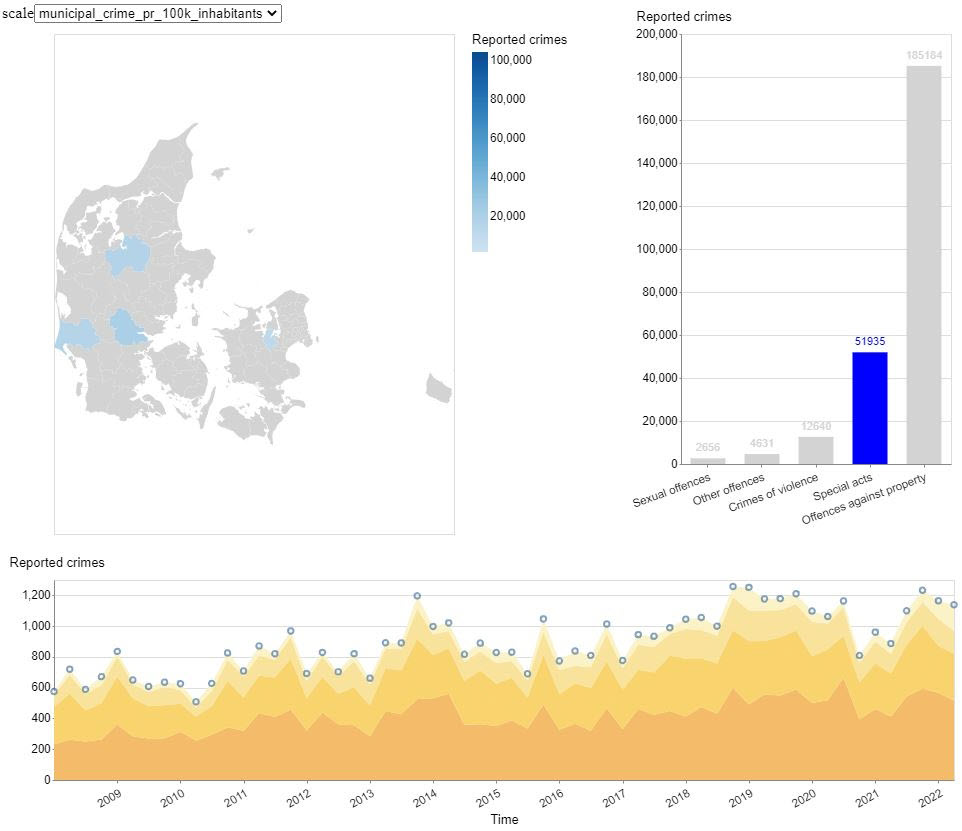 Visualizing Denmark's Crime Statistics
Visualizing Denmark's Crime StatisticsThis project was about visualizing the crime rates in different areas of Denmark. It shows over 5 different categories, how the crime rate has developed over time and across municipalities.
2021
-
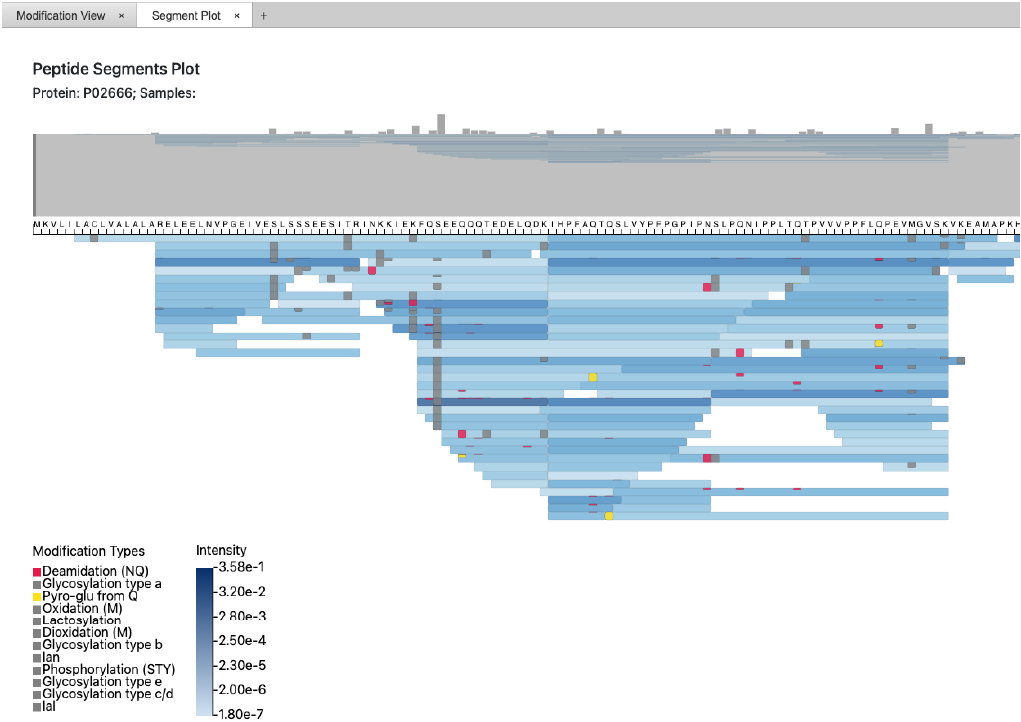 Visualizing Mass Spectrometry Data
Visualizing Mass Spectrometry DataPepModVis is a tool that supports food scientists in analyzing mass spectrometry data of protein samples. The analysis is done by using three different visualizations that each explore how peptide modifications are distributed in protein samples at different levels of granularity. The first visualization uses a heat map to show how modifications are distributed across different proteins; the second uses a heat map to show how modifications are distributed across samples; the third shows how modifications are distributed across peptides by using a novel visualization we call Peptide Segments Plot (PSP). In the PSP, peptides are visualized as rectangular segments, where the length and position of the segment encode the amino acid sequence of the peptides. The peptide modifications are likewise encoded as rectangles on top of the segments in which they are contained. The tool allows for exploratory data analysis by providing a structured overview and the possibility to interactively traverse the acquired MS data.
-
 Spotify Streaming History Visualization
Spotify Streaming History VisualizationWe have visualized our own data about music we have heard on Spotify. We have made a theme river and stacked area charts to show the temporal aspect. To compare features such as acousticness and danceability between genres, artists, and songs we have a grouped column chart. To compare the same features across different periods we have a column chart with selection menus. We also have a list showing the top artists.
-
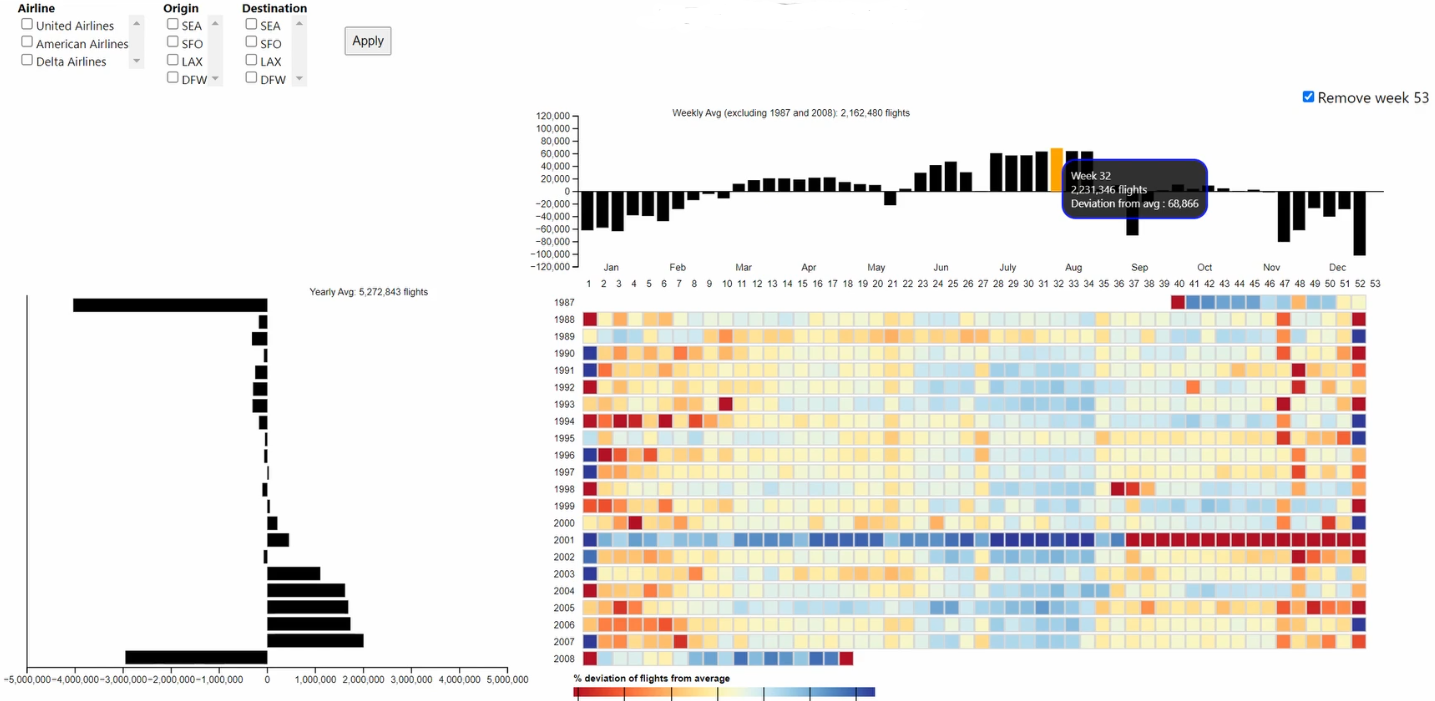 Visualizing all Flights in the USA between 1987-2008
Visualizing all Flights in the USA between 1987-2008This visualization enables users to explore a large dataset (120 million instances) of the details of all commercial flights in the USA between 1987 and 2008 (inclusive). The fields available include: Origin, Destination, expected and actual arrival and departure times, details on delay and cancellation (if such occurred), date that the flights was scheduled for, etc. The data is obviously too large to manually parse, and we found our visualization led to interesting (even counter-intuitive) discoveries.
-
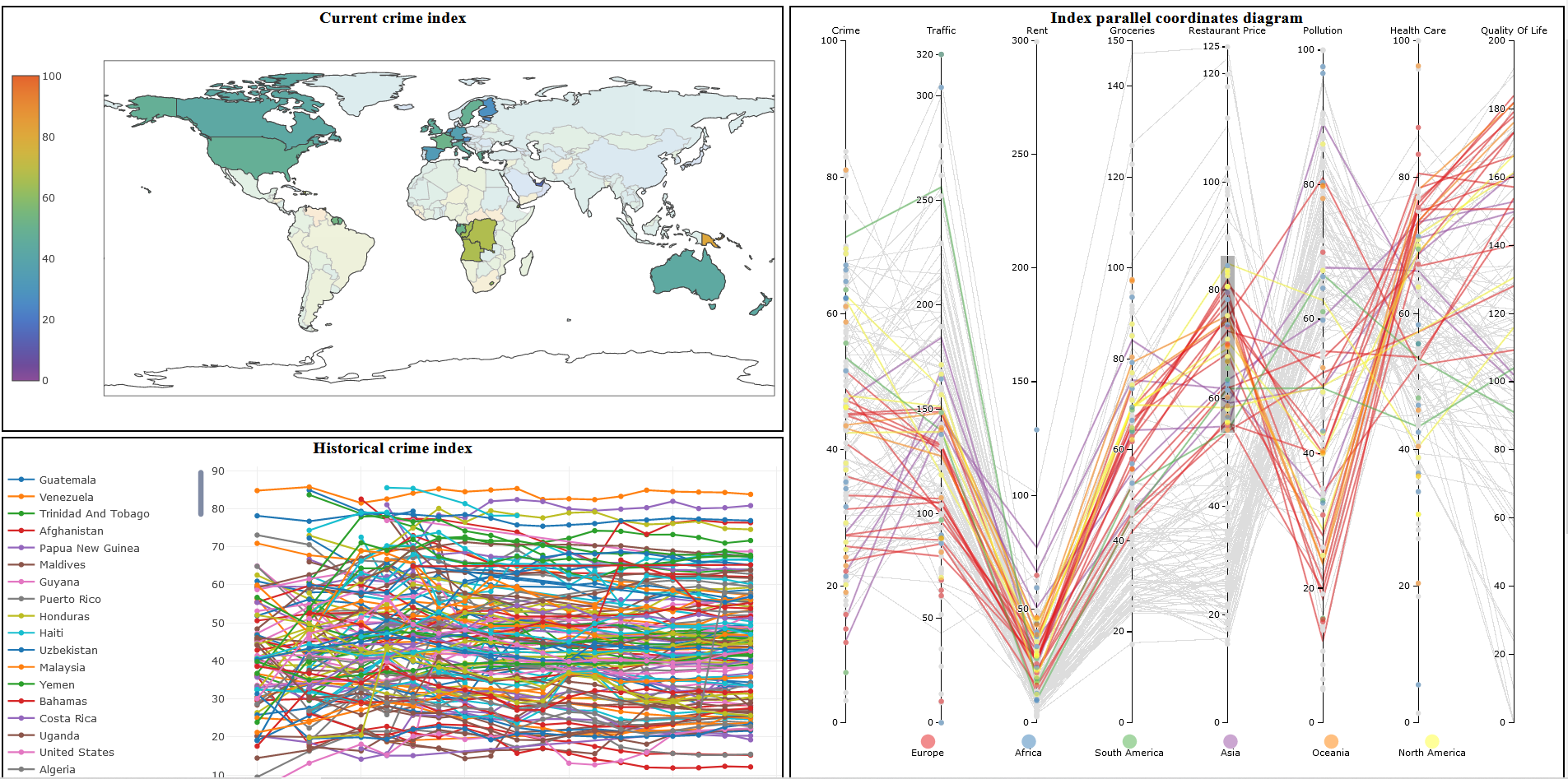 Visual Country Index Explorer for Numbeo Data
Visual Country Index Explorer for Numbeo DataThis project focuses on visualizing the crowd-sourced data from Numbeo, a website that gathers information on cost and standard of living for cities and countries across the world. The project focuses on the country index dataset with indices for areas such as cost of living, safety, wealth, and pollution. There are geo-spatial and time contexts for the data, and the proposed visualization tries to encapsulate all these dimensions into three multi-coordinated views: one for the geospatial context, one for the temporal context, and one for the for comparing the indices.
-
 Amazon Ads Analytics Visualization
Amazon Ads Analytics VisualizationWe present a visualization of Amazon advertisement analytic data for tracking, monitoring and optimizing the performance of sponsored ads for products sold at the Amazon marketplace. To do so, we present a web application dashboard that graphically shows relevant information from the raw data provided by Amazon Ads on a daily basis for products, advertisement campaigns, and keywords, with multiple indicators and metrics to measure that performance. The main focus is to visualize temporal data while promoting interactivity through Multiple Coordinated Views to allow users to identify trends and performance levels.
-
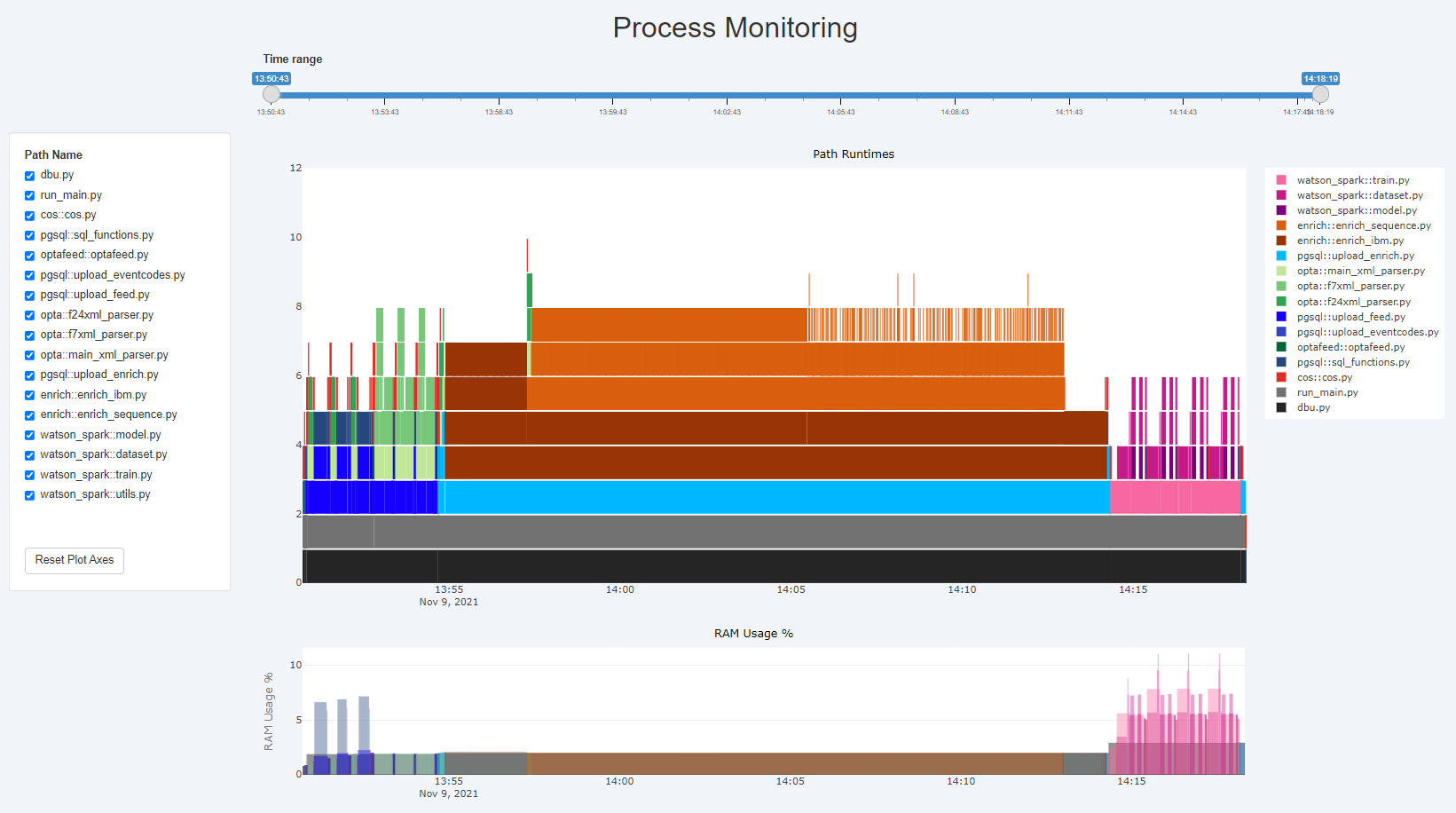 Visualizing Process Monitoring Data
Visualizing Process Monitoring DataWe introduce a profiling visualization developed for the area of application performance management. Our visualization allows users to gain an overview of performance during execution and identify bottlenecks or other adverse effects. The tool developed for this paper utilizes visualizations such as Flamegraphs and charts, supplemented by zoom, filter and interaction functionalities, compiled into a multiple coordinated view layout. The focus is on visualizing runtimes and call-stacks of system files, as well as memory (RAM) usage during execution. It was found that the tool is effective for solving the task of identifying performance issues, at a high-level view.
-
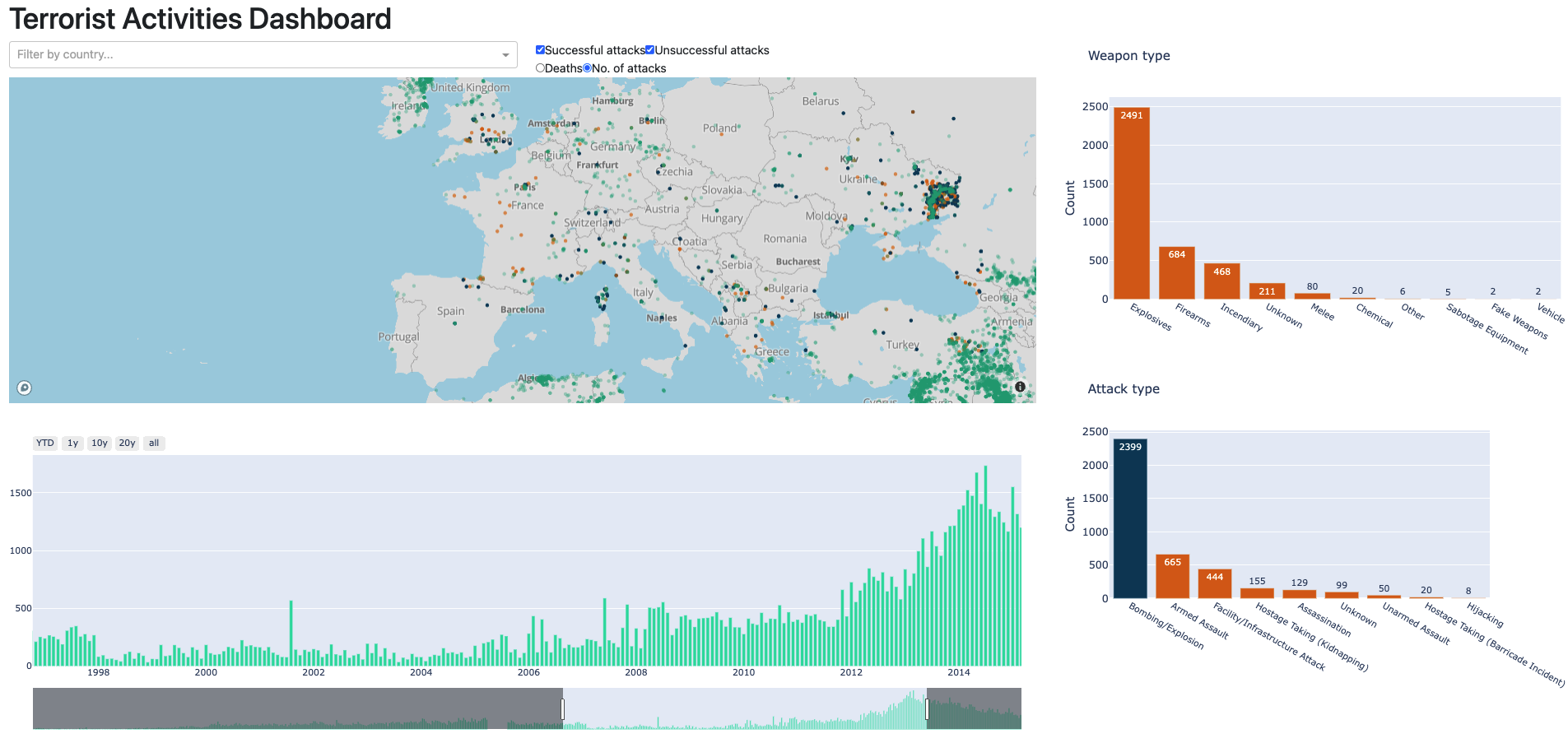 World Terrorist Attack Data Visualization
World Terrorist Attack Data VisualizationWith the ever-increasing number of terrorist attacks in the world along with the means of recording them, it is becoming infeasible to find meaning in the collected data. Given the amount of already existing misinformation based on misinterpreting the data, this may further lead to biases or prejudices against a specific nationality, race, or belief. In this project, we decided to bring more clarity to the data by leveraging the advantages of data visualization. In the end, we successfully developed a highly interactive visual dashboard that allows its users to explore the data efficiently and effectively.
-
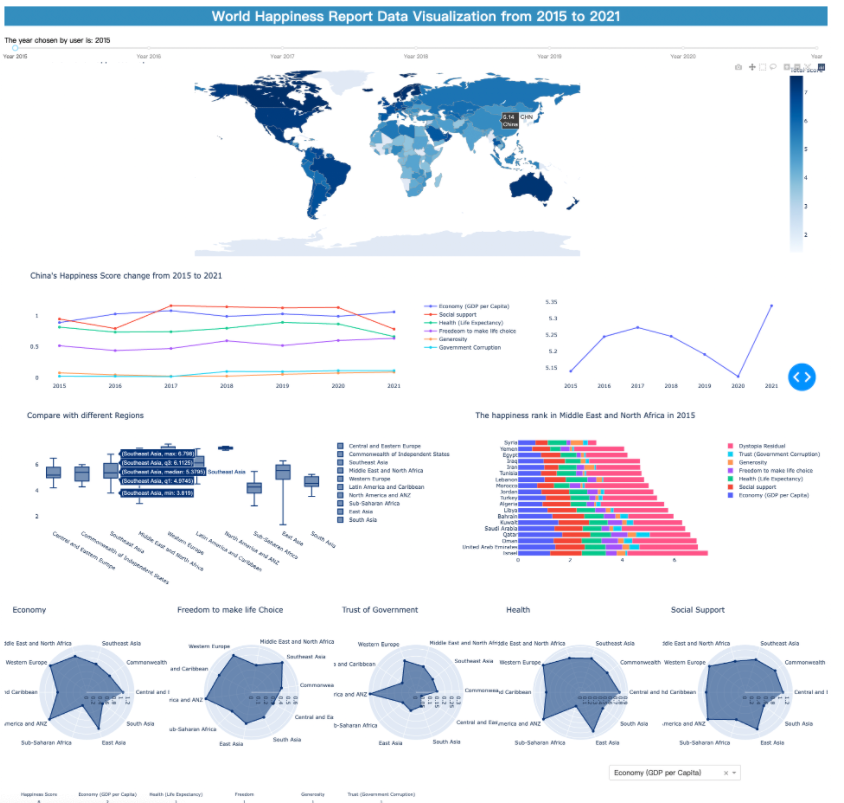 World Happiness Data Visualization
World Happiness Data VisualizationThe aim of this project is to visualize the happiness of people in different places, and help people get a better view of the world happiness report rather than abstract numbers. Users can visualize the total happiness score of all countries and regions on the world map. Also, users can find the correlations between happiness and different factors such as economy, social support, life expectancy, etc. And users can find out which area’s people are happier and the relationship between happiness and the development of countries. Last but not least, users can make comparisons between different countries, and see the trend of their scores from 2015 to 2021, and analyze why their happiness scores manifest such trend.
2020
-
 Visualizing Citation Graphs
Visualizing Citation GraphsOur project was about identifying and visualizing the chains of citations that exist between research papers in the field of Computer Science.
-
 Visualizing Wildfires in the US
Visualizing Wildfires in the USOur project aims to show the differences between fires depending on what caused the fires. Differences in frequency, size, location and time of year can all be seen in a single interactive visualization. In particular, we focused on comparing human generated fires with lightning generated fires.
-
 Spotify Music Visualization
Spotify Music VisualizationOur project was about presenting Spotify's weekly top 200 song charts for a time span of 4 years across 60 countries. By extracting 'audio features' from Spotify's API, we could visualize patterns and trends in music around the world.
-
 Road Accidents in the US and the UK
Road Accidents in the US and the UKThis project focuses on getting an informed and better understanding of the traffic data available to the public from the National Highway Traffic Administration and the United Kingdom Department for Transport from 2005-2015. To visualize this data, we decided to implement a dynamic trellis plot do give as much power to the user as possible. The user can select what parameter that will determine the x and y axis of the trellis plot, what vehicle type to highlight, whether the size of an accident should be visualized and what accidents in a year range within 2005-2015 should be visualized. Furthermore, the user can select a group of accidents with box selections and a more detailed bar chart will appear.
-
 Interactive Bayesian Network Models
Interactive Bayesian Network ModelsIn my project I developed an interactive visualization of a Bayesian Network model explaining the relation between credit approval likelihood and the applicant’s characteristics. The tool is based on open source web technologies and the statistical developer environment R. I integrated bar plots as detailed plots within the bigger graph structure showing the conditional probabilities.
-
 Visualizing Soccer Player Stats
Visualizing Soccer Player StatsThe goal with the project was to make a scouting tool for soccer scouts and management in football clubs that allows them to make their player assessment process faster. The tool uses data from the English Premier League and combines two different plots that enables the user to find the right player.
-
 Water Flow in Aarhus
Water Flow in AarhusWe have worked to visualize complex time series data of water flow in Aarhus, with data curtesy of Aarhus Vand. We have made an application there allows Aarhus Vand to explore and combine patterns of water usage measured from different locations around Aarhus. We have used Horizon Graphs to visualize flow, and applied interactive methods to compare usage and find patterns.
2019
-
 - Casper Hogenboom.png) Expanding your portfolio with Sneakers
Expanding your portfolio with SneakersAre you looking for an alternative way to enrich your portfolio? Step into the world of the sneaker business, and plan out your technical strategies. In this project, a dataset from the website StockX is explored to give an insight into what time it is best to buy or sell.
-
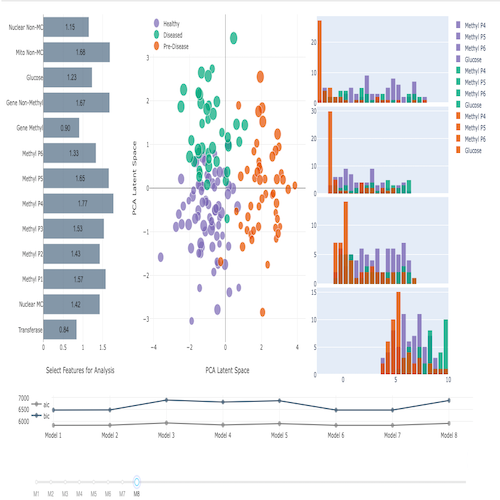 High-Dimensionality Data Exploration to Reveal Features Underlying Disease
High-Dimensionality Data Exploration to Reveal Features Underlying DiseaseSome disease predictors are inaccurate in distinguishing a pre-disease population. Unsupervised learning allows for clustering of medical data without need of a disease predictor. This tool allows for analysis of high dimensional patient data and exploration of patient grouping into diseased, at-risk, and healthy populations as derived from unsupervised methods. These methods can be altered quickly, providing rapid analysis of the clusters and insight into novel biomarkers underlying disease.
-
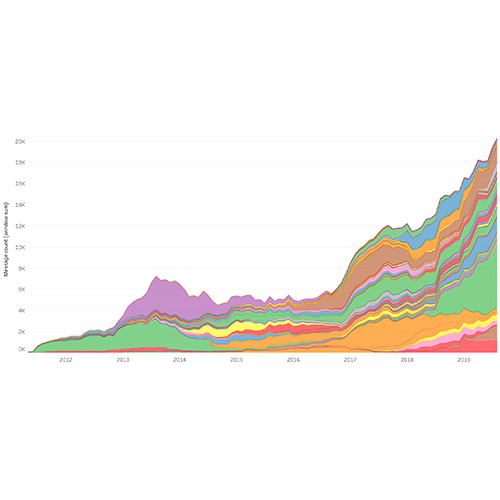 Facebook Messages
Facebook MessagesFacebook Messenger makes it easy to send and receive messages between your friends, and you can create group chats to keep in touch with many people at once. But Facebook does not provide a way of searching for patterns or trends in your messaging data. In this project, I create a visualisation of my own Facebook Messenger data that allows for overview and details on demand by filtering the data set and finding trends based on contact, timeframe, conversation type, month, weekday or hour.
-
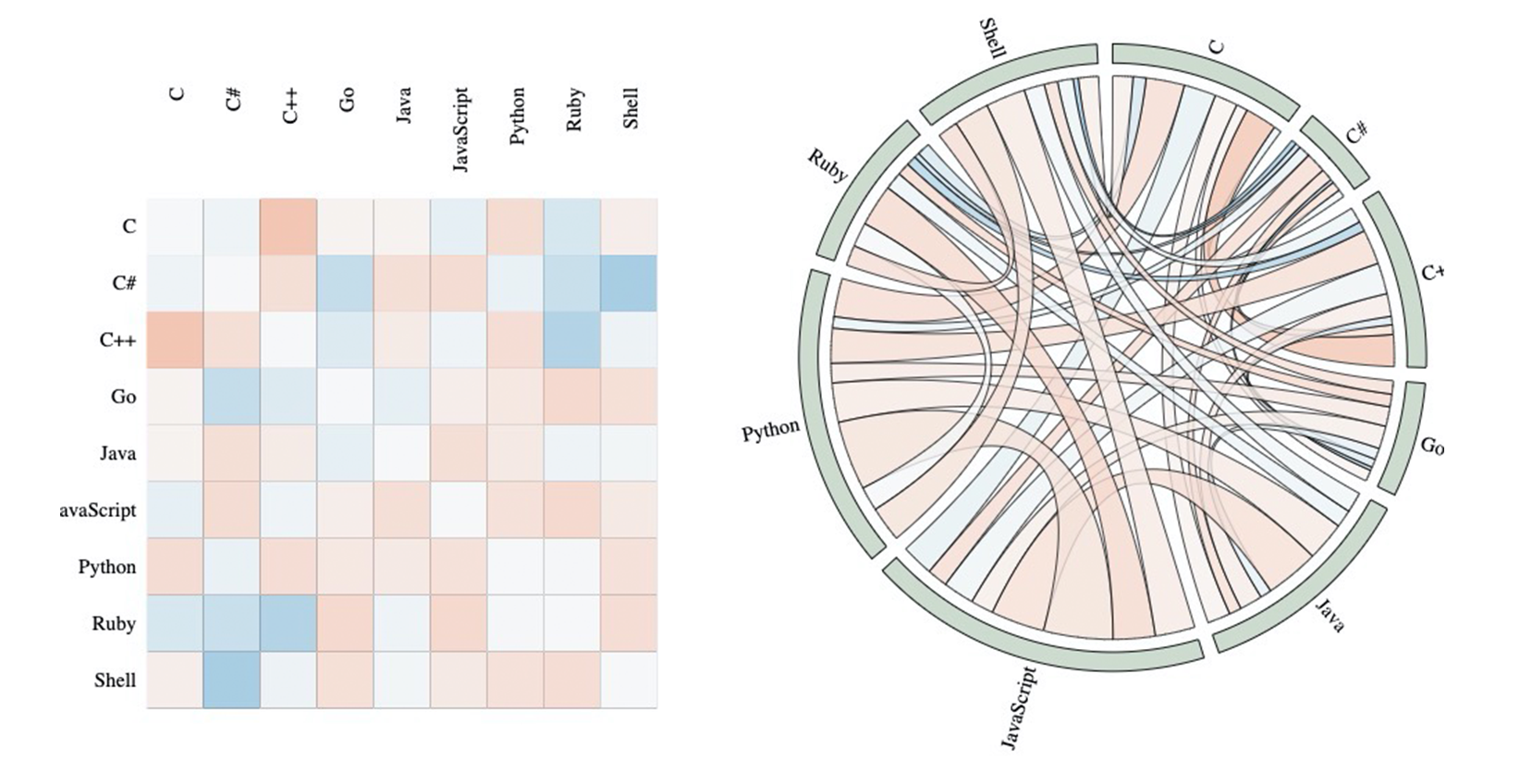 Language Correlation in Open Source
Language Correlation in Open SourceThis visualization helps to explore how different languages are connected to each other on Github. This is done by having a matrix representation showing the deviation from the expected value, and a chord diagram visualising the amount of connections between each language. We make a connection between language A and language B, if a user on Github has a repo with A and another repo with B.
-
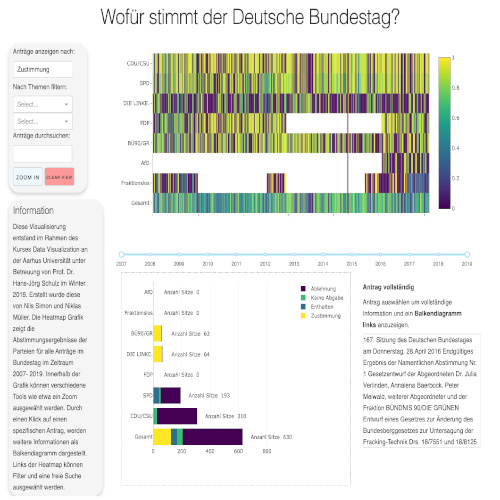 What's going on in German Government?
What's going on in German Government?This project aims to shed light into the matters of the German Bundestag by presenting the voting outcome for each parliament session since 2007 in a visually analyzable way. It allows comparing the voting behavior of the parties against each other and over time.
-
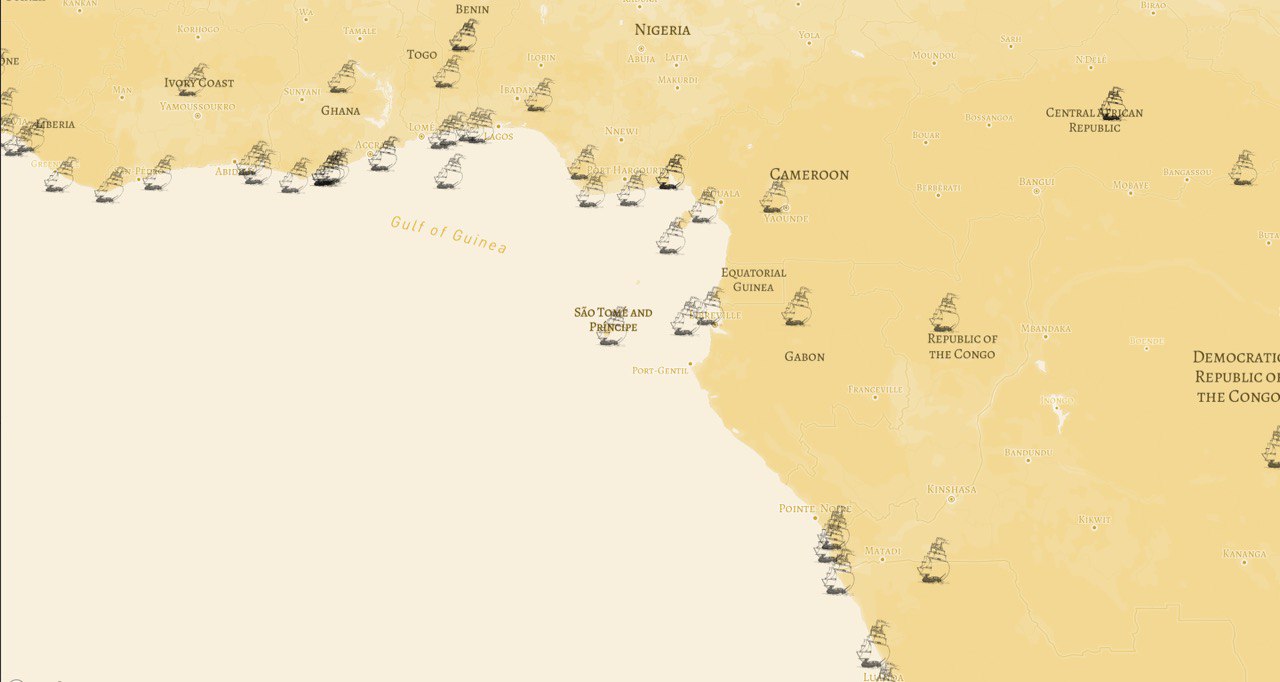 Displacing Germany: A Look at Trans-Atlantic Slave Trade
Displacing Germany: A Look at Trans-Atlantic Slave TradeAround 10 million people were abducted from Africa and shipped to the Americas between the years 1510 to 1860 as part of the transatlantic slave trade. This amounted to one percent of the world's total population in 1800. Today, the same would be analogous to displacing entire country of Germany. Our project is an attempt to visualise the involved voyages both on an aggregate and detailed level to shed some light on the human element of the egregious events of the past.
